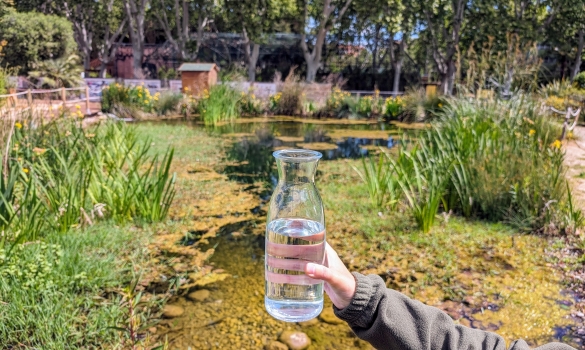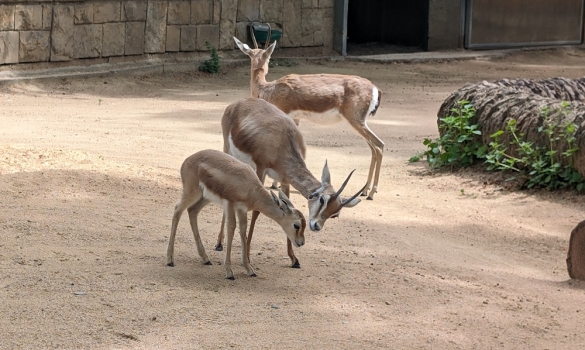

The species is native to the Bolivian region of Los Llanos de Moxos and is critically endangered as a result of deforestation and illegal trade
This is the first time it has bred at Zoo de Barcelona, one of the institutions taking part in the European ex situ conservation programme for this species
Two blue-throated macaw chicks (Ara glaucogularis) have been born at Zoo de Barcelona for the first time. The species is native to northern Bolivia and is critically endangered according to the International Union for the Conservation of Nature (IUCN). The main threats to the species come from deforestation and illegal capture.
The chicks were born in the summer and remained in the nest until a few days ago, tended to only by the reproductive pair that conceived them. This is usual behaviour for the species when found in its natural habitat. They can now be seen at the Palmeral, the facility at the Zoo where they live.
The birth of the two blue-throated macaws comes within the ex situ European Conservation Programme for this species, which the Zoo is actively involved in through the European Endangered Species Programme (EEP).
Estimates put the number of birds remaining in its natural habitat at between 200 and 300
The blue-throated macaw is endemic to Bolivia. Its area of distribution is extremely limited as it can only be found in the region of Los Llanos de Moxos, in the north of the country. More specifically, the species lives in savannahs and forest wetlands with a tropical climate, generally between 200 and 300 metres above sea-level. It feeds on fruit from different palm trees.
This species was believed to be extinct for years, until some individuals were spotted again in their natural habitat in 1992. Yet the prospects for its future are not very encouraging, as from the 1,000 plus individuals recorded in the early 1980s, between 200 and 300 remain today. The worrying decline in numbers means the species is now in critical danger of extinction, according to the International Union for the Conservation of Nature (IUCN). The main threats to the species come from deforestation and illegal trade.
The bird’s appearance is very similar to the blue macaw, with a similar distribution of colours and plumage, but it can be distinguished by a blue mark on its throat, hence its name. Adult birds measure around 85 centimetres long and weigh between 900 grammes and 1.1 kilos. It has a life expectancy of 50 years.
Zoo de Barcelona’s role in the conservation of threatened species
Zoo de Barcelona is actively involved in conservation, scientific research and dissemination relating to wild fauna and its natural habitats, paying special attention to native species and the most threatened species. This work is carried out with other zoos, universities, scientific institutions and organisations, and in line with the directives established by the World Association of Zoos and Aquariums (WAZA) and the European Association of Zoos and Aquaria (EAZA).




